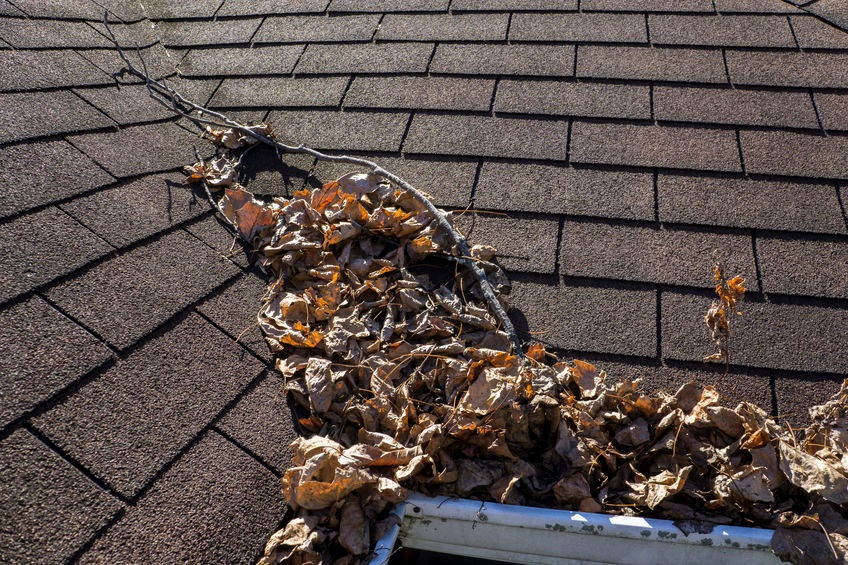
Life on the North Carolina coast moves at a fast pace, but in the best way. Between juggling work, family schedules, beach visits, and trying to squeeze in a little of that laid-back coastal chill, your days stay packed. Thinking about your roof? That never quite makes the daily to-do list.
But then, out of nowhere, you see a dark stain on the ceiling…or a cracked shingle in the yard…and suddenly your busy routine screeches to a halt. While you’ve been going through everyday life, Mother Nature hasn’t slowed down for a second. Hurricanes, tropical storms, hail, and relentless coastal winds have been quietly testing your roof.
Your roof is your home’s first shield against all that chaos, but small issues are easy to miss until they become big, expensive problems. That tiny patch of damage from last month’s storm? It could already be letting water in. The key is spotting these warning signs before they interrupt your life with a leak or major repair.
The good news? Your roof typically gives you warning signs before a minor issue becomes a major disaster. Catching these red flags early can save you money and prevent serious damage to your home's interior. Let's walk through the five most important signs that your coastal roof needs immediate attention!
1. Missing, Cracked, or Curling Shingles
After a coastal storm pounds through the area, take a quick walk around your property and look up. Do you notice any shingles that are:
Even if you only spot a few damaged shingles, don't wait! Coastal weather patterns are unpredictable, and that small problem area could balloon into extensive water damage during the next storm.
- Missing entirely – Gaps in your roof covering expose the vulnerable underlayment to the elements, creating an express lane for water damage
- Cracked or broken – Salt air and UV exposure can make shingles brittle over time, and storm winds easily break these weakened tiles
- Curling at the edges – When shingles start curling upward or downward, they've lost their protective seal and can't effectively shed water anymore
2. Water Stains on Ceilings or Walls
You're relaxing in your coastal home when you notice mysterious brown or yellow stains spreading across your ceiling. These water stains are your roof's way of waving a giant red flag and shouting for help!
Water stains typically indicate that moisture has penetrated your roof and is making its way through your home's structure. In coastal areas, this is particularly concerning because:
Don't ignore these stains or assume they'll dry out on their own. Get a professional inspection immediately to identify the source and extent of the leak.
- Salt-laden water is more corrosive – Ocean moisture doesn't just create puddles; it actively damages wood, drywall, and insulation
- Mold and mildew thrive in humid coastal climates – Once water gets inside, the warm, humid coastal conditions create a perfect environment for unhealthy mold growth
- Hidden damage spreads quickly – By the time you see stains on your ceiling, the damage behind your walls is often far more extensive than you'd expect
3. Granules in Your Gutters
When you're cleaning your gutters (which, living at the coast, you should do regularly!), pay attention to what you're scooping out. If you notice a significant amount of dark, sand-like granules accumulating in your gutters and downspouts, your shingles are literally deteriorating before your eyes.
These granules serve a crucial protective function, shielding your shingles from UV damage and helping them shed water effectively. When shingles lose their granules, they become vulnerable to rapid deterioration. Coastal homes experience accelerated granule loss due to salt spray and intense sun exposure. If you're finding handfuls or if your gutters look like they're filled with coarse sand, it's time to call in a roofing professional for an assessment.
4. Sagging or Drooping Roof Sections
Look at your roofline from a distance. Does it appear straight and true, or do you notice any areas that look saggy or uneven? A sagging roof is a serious problem that demands immediate professional attention. Sagging typically indicates structural issues that could include water-damaged decking, compromised rafters, or failing support beams. This is particularly concerning in coastal areas where:
- Salt air accelerates metal corrosion – Nails, brackets, and other metal fasteners can deteriorate faster near the ocean
- Moisture accumulation weakens wood – Persistent humidity can cause wood rot in your roof's structural components
- Hurricane-force winds stress the structure – Repeated exposure to strong coastal storms can gradually compromise your roof's structural integrity
5. Light Visible Through Your Attic or Increased Energy Bills
On a sunny day, head up to your attic, turn off the lights, and look around carefully. Do you see any pinpricks of light shining through your roof boards? If so, you've got openings where light and water can enter your home.
Additionally, if your energy bills have suddenly spiked without explanation, your roof might be the culprit. Damaged roofing allows your carefully controlled indoor air to escape, forcing your HVAC system to work overtime in the coastal heat and humidity. It may be time for a roof replacement.
Don't Wait—Take Action Today!
If you've noticed any of these warning signs, contact Coastal Pro Roofing. We're a reputable local roofing contractor who specializes in coastal properties. We understand the unique challenges of oceanfront roofing and can provide expert repairs that stand up to your home's demanding environment, and it’s better to fix it early than wait for a larger repair!

